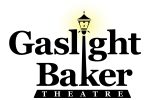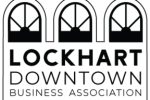Growth motivates Lockhart City Council’s decision to allow creation of planned development district
By Miles Smith
LPR Editor
The Lockhart City Council last week in a 6-1 decision approved a zoning change that will facilitate the construction of 259 new single-family homes in the western portion of the city.
A 66.7-acre parcel of land on Mockingbird Lane owned by 11 second-generation heirs that include Mike London, Carolyn Dill Johnson and Greg Dill is now designated as a planned development district, paving the way for the owners to sell the land to homebuilder D.R. Horton, which plans to build a mix of one- and two-story homes with an average cost of approximately $230,000 and a mean square footage of about 1,700.
The zoning change was first presented to council in June, where it failed with a 5-2 vote – the majority not being enough due to protestors living on more than 20 percent of the total land area within 200 feet of the PDD site.
Protestors cited 45-foot-lots that are narrower than the 65-foot widths allowed in a residential low density development, traffic concerns and issues with the non-brick masonry planned for the homes among the reasons they didn’t want the zoning change.
The plan included communal green space, hike and bike trails and water features that could double as detention ponds in the event of a flood.
Developers still included the communal space in their new plan, but expanded the minimum lot width from 45 to 50 feet and decreased the number of properties from 279 to 259. The plan includes the construction and completion of Maple, which will pass through the neighborhood.
John Castillo and Kara Bliss McGregor originally voted against the voting, but Bliss McGregor changed her vote last week.
“I voted against the zoning change the first time around because I believed DR Horton could do a little better,” McGregor said in a letter written to the Post-Register. “I am not “anti-growth” as some have suggested (one candidate for local office called my employer in Austin to lambast my nay vote and motives, and hollered at me on the phone when I attempted a dialogue).
“The Mockingbird tract is an ideal location for new families, and should be developed. It has been zoned for residential development since 1988, and the Maple Street extension was approved in 2000 as part of the city’s 2020 plan.”
Mayor Lew White expressed disdain for the four single-story elevations presented to council, but was one of the six on the council who voted for the zoning change. The mayor cited the influx of new companies who are opening businesses or considering coming to Lockhart – and the resulting number of jobs created – as reasons to remove the roadblock to building a new subdivision in Lockhart.
While protestors said they were afraid the new homes would be low-quality and decrease the value of their properties, White said he didn’t think so, adding that he believed homes with cement board siding would likely become more prevalent in the area given the rising cost of building materials.
The mayor mentioned he liked the greenery and the trails that were planned for the neighborhood.
“There are a lot of people living in these homes who are perfectly satisfied with them,” White said. “There hasn’t been a big upheaval about them. One person came up to me who was outraged about the homes, and I said, ‘Hey, doesn’t your son live in a D.R. Horton home? Does he think anything is wrong with it?’ and they said, ‘No.’
“It’s not low quality just because it doesn’t have brick on it.”
Castillo stuck to his original vote of “no” that he cast in June, siding with protestors who cited another development in Lockhart that worked within the confines of the RLD zoning and used brick veneer on the exterior.
“These guys are not the only ball game in town,” Castillo said. “If we’re going to say homes need to be built on 65-foot lots, then we need to stick to that.”
A request for comment from the ownership group was not received before deadline Tuesday.
In other city council news, councilmembers unanimously approved a pay increase for Lockhart police officers, which city officials say are generally paid 8-15 percent less than officers in surrounding areas. The new police step plan with a 10 percent increase will cost an estimated $185,000.
Additionally, a property tax increase that would pay for the increase could be on the way. The effective rate of .6727 for 2017-18 could see a 4-cent increase to .7107.
The council will vote on the tax rate at its Aug. 21 meeting.



